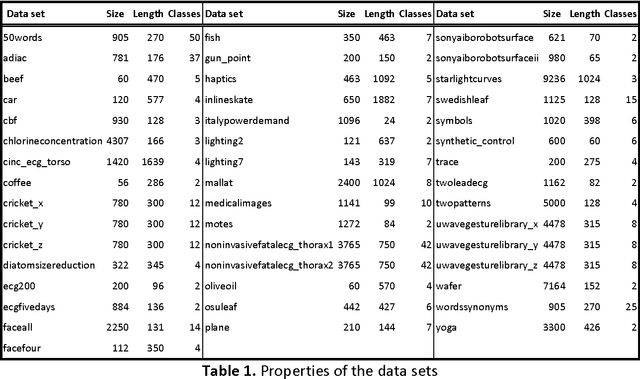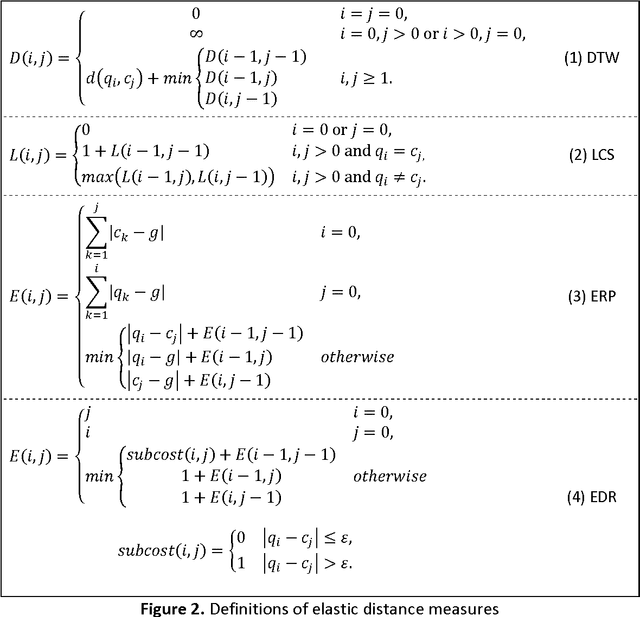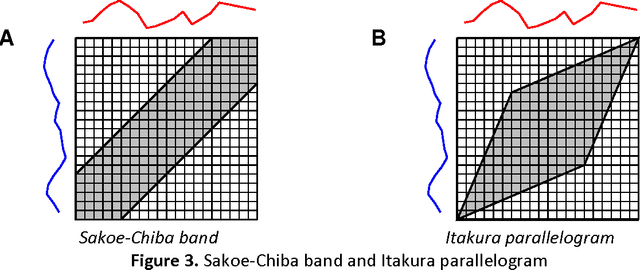The Influence of Global Constraints on Similarity Measures for Time-Series Databases
Paper and Code
Dec 25, 2013



A time series consists of a series of values or events obtained over repeated measurements in time. Analysis of time series represents and important tool in many application areas, such as stock market analysis, process and quality control, observation of natural phenomena, medical treatments, etc. A vital component in many types of time-series analysis is the choice of an appropriate distance/similarity measure. Numerous measures have been proposed to date, with the most successful ones based on dynamic programming. Being of quadratic time complexity, however, global constraints are often employed to limit the search space in the matrix during the dynamic programming procedure, in order to speed up computation. Furthermore, it has been reported that such constrained measures can also achieve better accuracy. In this paper, we investigate two representative time-series distance/similarity measures based on dynamic programming, Dynamic Time Warping (DTW) and Longest Common Subsequence (LCS), and the effects of global constraints on them. Through extensive experiments on a large number of time-series data sets, we demonstrate how global constrains can significantly reduce the computation time of DTW and LCS. We also show that, if the constraint parameter is tight enough (less than 10-15% of time-series length), the constrained measure becomes significantly different from its unconstrained counterpart, in the sense of producing qualitatively different 1-nearest neighbor graphs. This observation explains the potential for accuracy gains when using constrained measures, highlighting the need for careful tuning of constraint parameters in order to achieve a good trade-off between speed and accuracy.
 Add to Chrome
Add to Chrome Add to Firefox
Add to Firefox Add to Edge
Add to Edge